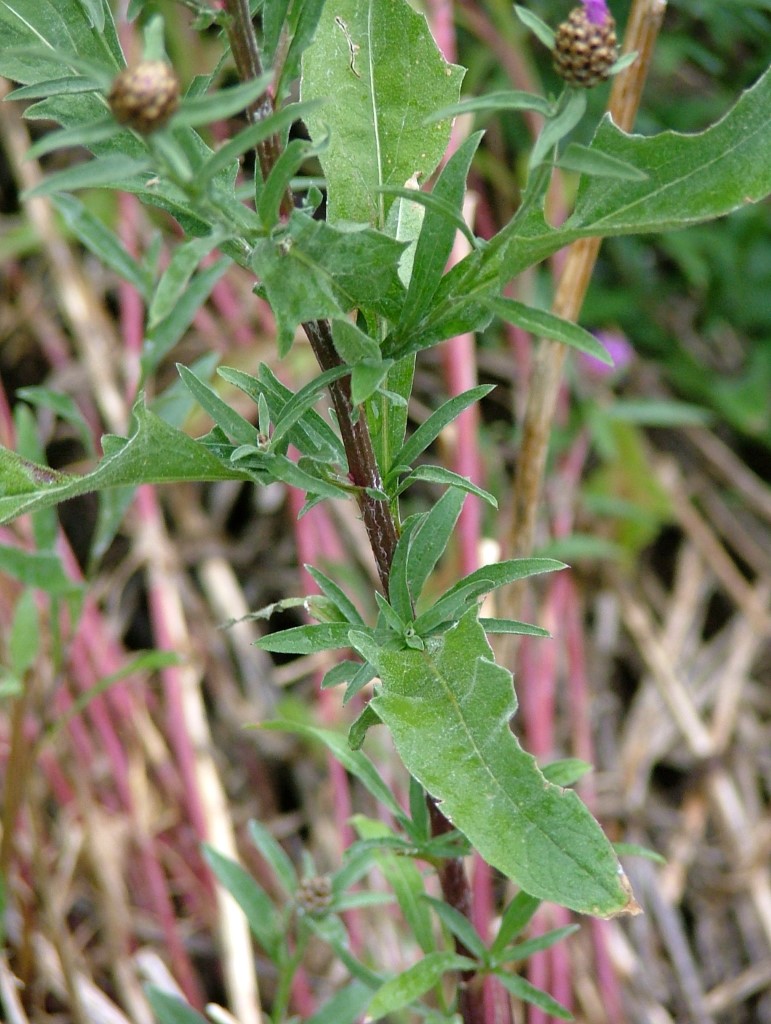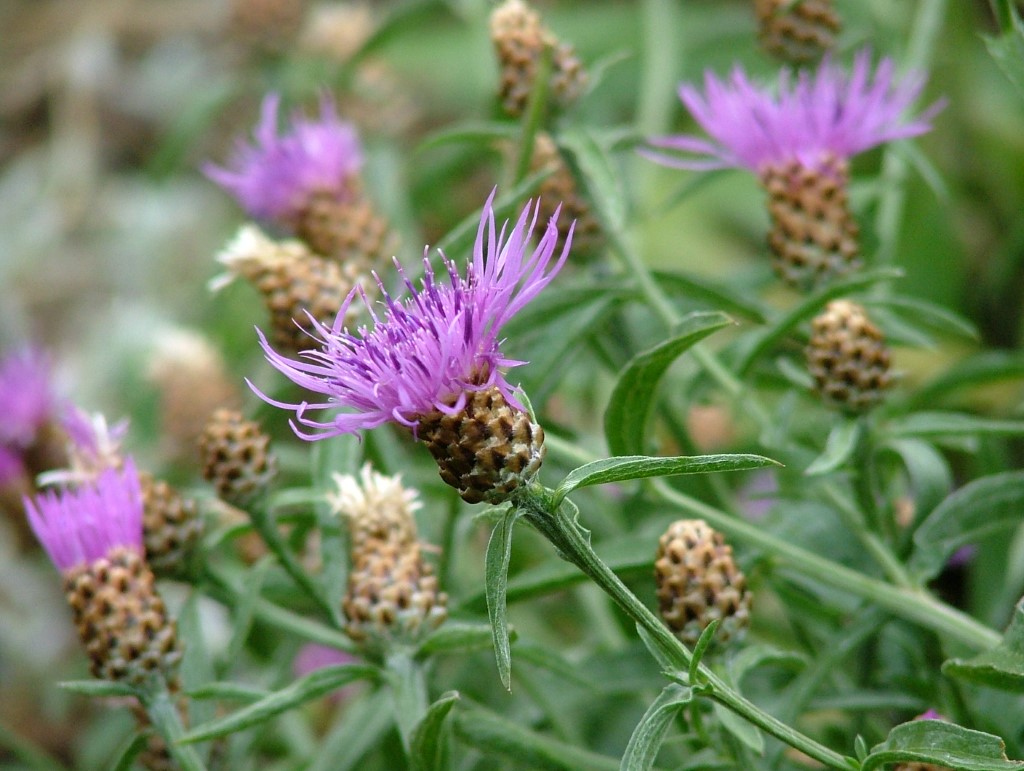
Meadow Knapweed

Description
Meadow knapweed is a short-lived perennial forb in the Asteraceae (daisy) family. It grows from a deep taproot to form a basal rosette in its first year of growth; in subsequent years it produces a main stem erect 20 to 40 inches tall. Leaves are arranged alternately on stems and usually lanceolate but may be lobed. Leaf margins may be smooth, wavy, or toothed. Leaves decrease in size up the stem. The plant may be covered in small hairs giving it a grayish-green appearance. Meadow knapweed flowers from early summer to fall. Flowers are similar to those of spotted knapweed, but they are frequently larger with larger bracts. While budding, these bracts may appear metallic gold but fade to light brown or dark brown as the flower matures. Flowers are terminal and usually solitary but may occur in small clusters. Flowers are clusters of florets which are deep reddish purple to white. Seeds are small (2.5 mm), oval, white to light brown, and have pappus at one end.
Origin and Spread
Meadow knapweed is a hybrid of two knapweed species (black knapweed and brown knapweed) native to Europe and escaped cultivation. It spreads primarily by seed, but it may produce new shoots from the root crown. Pappus on seeds catch on clothing, fur, and equipment and are transported to new areas. It is primarily found in disturbed sites, landscapes, and roadsides.
.png)
Management Options
Prevention and cultural control strategies should be utilized as much as possible.
In Teton County, meadow knapweed infestations are not dense enough to sustain biological control agents; however, some biological control agents in use for spotted knapweed are also effective in reducing populations of meadow knapweed. These agents include seedhead feeding flies (Urophora quadrifasciata) and beetles (Larinus minutus and Larinus obtusus).
Because meadow knapweed has a taproot, it can be readily managed by hand pulling or digging out the root. Wear gloves and long sleeves when handling knapweed species as they can cause allergic reactions. Mowing will not eradicate stands of meadow knapweed, but it can be beneficial in preventing flower production. Do not mow while seeds are present.
Larger infestations can be controlled with herbicides. Spring and fall treatments of rosettes are recommended, but treatment of bolting plants can be effective. Read the label before using any herbicide. Contact TCWP if you have any questions about application rates or how to use an herbicide.
Additional Resources
- Weed Report: Meadow Knapweed. Weed Control in Natural Areas in the Western United States. (2013) DiTomaso, Kyser et al. University of California.
- Meadow Knapweed. Washington State Noxious Weed Control Board.
- Meadow Knapweed Identification and Control. King County Noxious Weed Control Program.
- Meadow Knapweed Identification and Management (2019) Colorado Department of Agriculture - Conservation Services.


